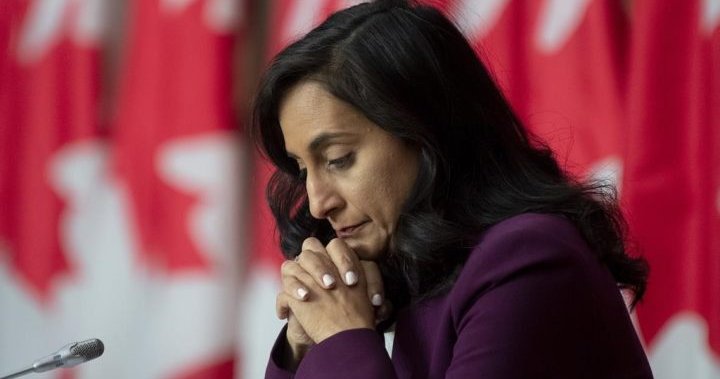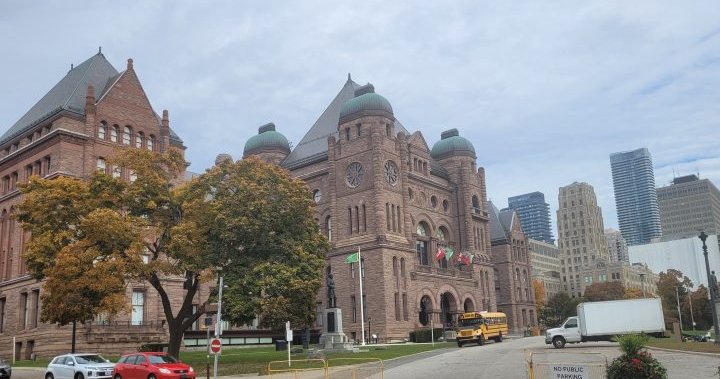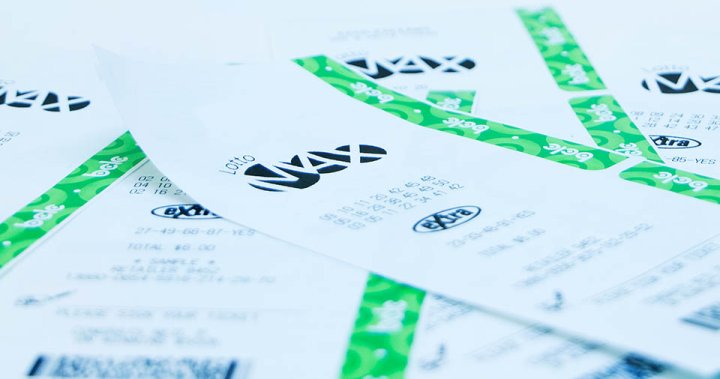Treasury Board President Anita Anand says Canada is at a point where it needs to “watch our purse strings” when it comes to spending, but adds the federal government is “striking the balance” between fiscal responsibility and supporting Canadians.
That approach is not just being taken with addressing cost-of-living issues like affordable housing — a key focus of last week’s fall economic statement — but also national defence, a portfolio Anand previously led and says will not be impacted by efforts to cut costs in Ottawa.
“It certainly is an economic period where we need to watch our purse strings as well as to make sure we’re delivering on the priorities that are so important for our country,” she told Eric Sorensen in an interview that aired Sunday on The West Block.
She called the measures introduced in Tuesday’s fiscal update “targeted” toward building more homes faster.
Tuesday’s update adds $20.8 billion in new spending since the spring budget over five years, with some new measures designed to boost the housing supply, including rental units and affordable housing. But much of that new spending is tied to previously-announced policies and programs.
One new proposal is a Canadian Mortgage Charter that will set expectations for how lenders interact with homeowners throughout the mortgage process, a measure Anand called “very important.”
“Canadians don’t often know what their rights are when they are visiting their financial institution,” she said.
The charter would inform Canadians on measures many banks already have in place that may provide relief, she added, including waiving fees and costs as well as lowering interest rates for amortization.
The fall economic statement also outlines some future priorities for the federal government, including tying federal infrastructure dollars to housing action by local governments, which Anand noted is already being expressed by Housing Minister Sean Fraser in his conversations with municipalities.
The update projected the deficit for the current fiscal year to come in at $40 billion, largely unchanged from the Liberals’ spring budget forecast, with deficits shrinking, but not disappearing, over five years.
However, the forecasts show larger deficits than were previously expected, largely because the economic slowdown is expected to weigh on government revenues while increasing the servicing costs on federal debt, while new spending is being layered on to future budgets.
New guardrails are being introduced with the goal to keep deficits below one per cent of gross domestic product beginning in 2026-27. Based on the federal government’s projection for the size of the economy in 2026, that would mean the deficit would have to be capped at about $32 billion.
Anand referred to data frequently used by the Liberal government to portray Canada as “a leader in terms of our fiscal health”: the country has retained a triple-A credit rating and has the lowest deficit and debt-to-GDP ratio in the G7.
She added the Liberals’ past efforts to tackle affordability — such as the Canada Child Benefit, ensuring $10-a-day child care across the country, and extending the small business loan program well past the pandemic — create a track record the government intends to continue despite the changing economic environment.
“We are definitely striking the balance between the fiscal responsibility track that we are on, as well as being there to support Canadians, which is exactly what our government has done during the pandemic and will continue to do,” she said.
Back in the summer when she was named president of the Treasury Board, Anand ordered her fellow ministers to find $15 billion in savings in their departments over five years by October, building on a spending pullback promised in the spring budget.
The defence department has said it has identified close to $1 billion over four years in potential reductions. But Anand told Sorensen those cuts won’t impact the Canadian Armed Forces themselves.
“The spending review is actually specific that it will not include the Canadian Armed Forces,” she said.
“The amounts that I tabled in the supplementary estimates included amounts relating to outsourcing (or) third-party contracting, as well as executive travel. Those are funds that we are asking all department to see where they can make savings.
“At a time when Canadians are watching their pocketbooks, the government of Canada is no different.”
Defence Minister Bill Blair, who was shuffled into the role to replace Anand, has publicly confirmed that Anand was “crystal clear” that her request of the defence department should not “in any way impact on (Canadian Armed Forces) capability or the support we provide to CAF members.”
But the chief of the defence staff, Gen. Wayne Eyre, told a House of Commons committee in September that finding almost $1 billion in savings will affect the Armed Forces’ capabilities.
He expressed to Global News in an interview on Remembrance Day that he is “very, very concerned about our lack of our readiness state” and that Canada has “much to do” to restore that readiness.
“I was in the portfolio as the minister of national defence, and we do need to grow our Canadian Armed Forces, Anand said in response to Eyre’s comments. “We are seeing a shortfall in recruitment and we need to make sure that we are at all times ready.”
At the same time, Anand said major new procurements are underway and continuing despite the government’s belt-tightening, including new F-35 fighter jets, NORAD modernization and overall increases in defence spending. Yet Blair has also said Canada may need to push off some major procurement projects, such as the shipbuilding strategy, and make do with older equipment for now.
Anand also said her supplementary estimates include about half a billion dollars toward increased CAF member compensation and benefits, and another half-a-billion in new investments for Ukraine.
She also wouldn’t say if Canada will ever meet its NATO commitment of spending two per cent of GDP on defence. Canada spends 1.3 per cent currently.
“We will continue to do what we need to during this fiscal period,” she said.
—With files from the Canadian Press




